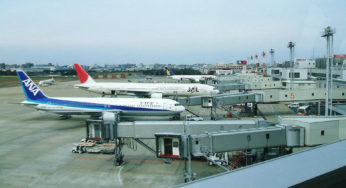Transport in Japan
Airports in Japan
Airport of Japan (日本の空港), will talk about airports in Japan, grouped by classification and sorted by location. Overview Based on…
Shinkansen
The Shinkansen (Japanese: 新幹線), colloquially known in English as the bullet train, is a network of high-speed railway lines in…
Bullet train
The Bullet train (Shinkansen) is a Japanese high-speed rail operated by JR Group companies. Until 1987 (1986) was operated by…
Japanese subway
The Japanese subway (Nippon no Chikatsu) will explain the subway system in Japan. Mainly railway lines running underground (excluding various…
Modernization of Japan’s railway
In 1988 the Seto Ohashi Bridge and the Seikan Tunnel opened (Ichinenkijima), it became possible to cross directly to Shikoku…
Privatization of Japan’s railroad
After the war, the National Railways, which was regarded as the backbone of the domestic transportation system and positioned as…
Post-War Japanese railroad Reconstruction
During the Sino-Japanese War / the Pacific War (World War II), many facilities and vehicles were destroyed due to passenger's…
The golden age of Japanese railroads
Since the establishment of the Japanese railroad, the basic policy was government and government administration. This is because Mr. Masaru…
Early history of Japan’s railway
In 1825, railroads using steam engines were put into practical use in the UK for the first time. About 30…
Rail transport in Japan
Rail transport in Japan is a major means of passenger transport, especially for mass and high-speed travel between major cities…
Japanese taxis
A Japanese taxi (日本のタクシー) describes taxi circumstances in Japan. Market size The market size of the whole country is about…
Motorbike in Japan
Motorbike in Japan (motorcycle in Nihonbashi) describes motorbike license classification, laws and environment in Japan. Regarding the history of motorcycle…
Japanese bus
The Japanese bus (日本のバス) describes the bus situation in Japan. In this section, we describe a bus as a passenger…
Expressways of Japan
The expressways (高速道路 kōsoku-dōro, lit. high-speed road) of Japan make up a large network of controlled-access toll expressways. History In…
Road in Japan
According to Japan Statistical Yearbook 2015, Japan in April 2012 had approximately 1,215,000 km of roads made up of 1,022,000…

